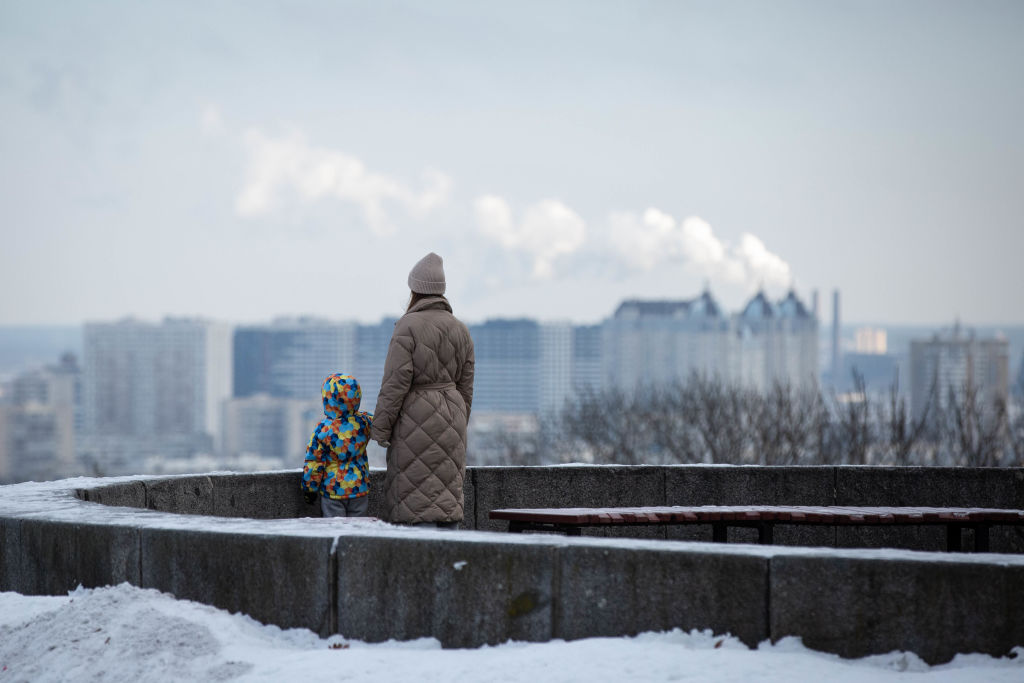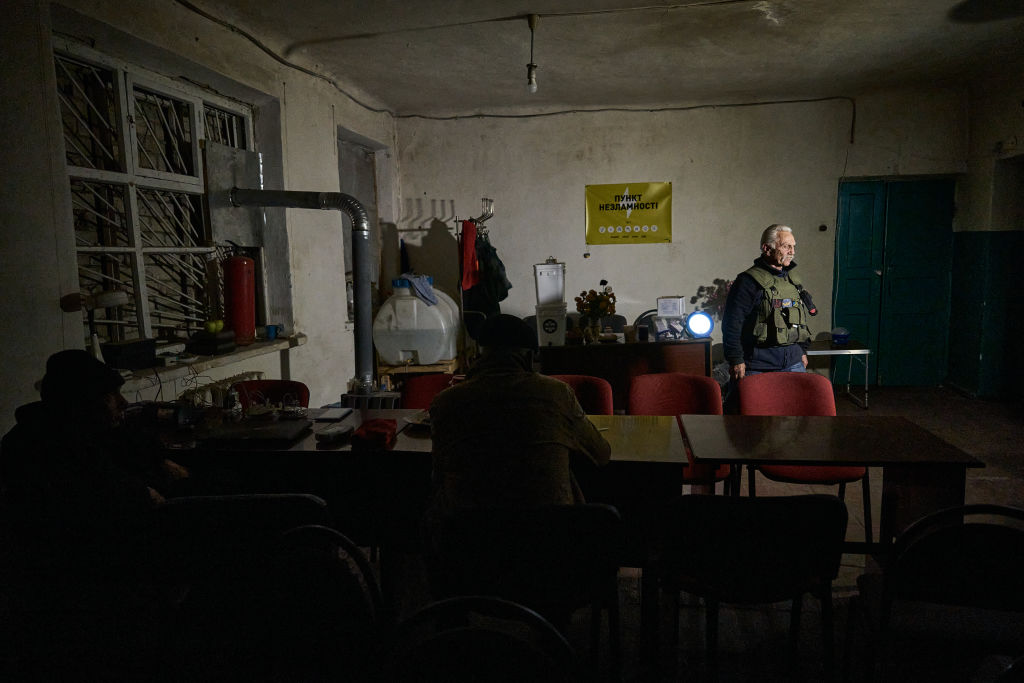
Across Ukraine, people are preparing for a harsh winter. Some have stocked up on firewood, candles and gas canisters, while others have invested in generators and solar panels to get through the season. Energy infrastructure has been covered with sandbags and metal cages, and in some cases moved underground.
The flurry of preparations comes as Ukrainian officials warn that when the temperature drops, they expect yet another round of attacks on an energy system that has not been fully repaired from last winter’s attacks. Last year more than half of Ukraine’s energy sector was damaged by the strikes, plunging cities into darkness and forcing people to go long periods without water or heating amid the freezing Ukrainian winter. Even in hospitals, surgeries were performed under the dim light of headlamps and torch lights as all but the most essential electricity use was curtailed.
"We are almost half way through November and must be prepared for the fact that the enemy may increase the number of drone or missile strikes on our infrastructure," President Volodymyr Zelensky said in his nightly address on Nov. 12. “Russia is preparing for winter.”
“We call it the energy front, it’s like a second line of the war,” says Herman Halushchenko, the Ukrainian Energy Minister in an interview with TIME on Nov. 9.
Read More: Ukraine’s ‘Secret Weapon’ Against Russia Is a Controversial U.S. Tech Company
According to the U.K. Ministry of Defense, Russian precision missile strikes have slowed, as the Kremlin seeks to save long-range missiles for heavy winter strikes on Ukraine’s energy system. These attacks will likely be bolstered by strikes by Shahed drones, which Russia has bought in large numbers from Iran and has started to produce on its own. Russia has also been launching small-scale attacks in what Ukrainian officials have described as an attempt to probe for weaknesses in Ukraine’s air defenses.
“In my opinion they will start when the temperature reaches below zero degrees celsius, because in that situation the cold weather could add damage,” says Halushchenko.
Ukraine's energy infrastructure has been targeted more than 60 times in recent weeks, according to Halushchenko. Last winter, Russia fired more than 1,200 missiles and drones at Ukrainian energy facilities, according to Ukrenergo, Ukraine’s national energy company. As a result, Ukraine faced rolling nationwide blackouts and heat outages. Average Ukrainian households endured five weeks without power during the winter of 2022, according to the United Nations Development Programme.

Over the last few months, Ukraine has carried out the most extensive repair program in the history of its energy sector, restoring electricity to 9 million people. It has tried to re-jigg its energy system to make it more resilient, and has built protective domes or barriers around key infrastructure.
“We have implemented some sorts of passive protections,” says Haluschenko. “But of course air defense is the best solution.”
Ukraine’s air-defense systems are stronger than they were a year ago. Germany recently committed to bolstering Ukraine’s defenses further with two more IRIS-T anti-air systems, which cost over $100 million a piece, and the U.S. is reportedly providing 60 Gepard anti-aircraft tanks. Even so, Ukraine’s existing stocks of air defense systems will not be enough to protect the country, Ukrainian officials have repeatedly warned.
Read More: Inside Volodymyr Zelensky’s Struggle to Keep Ukraine in the Fight
“From the point of view of electricity generation, we have the capacity for this winter,” says Halushchenko. “But everything will be dependent on the level of attacks and the damages they achieve.”
The country faces serious challenges going into this winter, according to Maciej Zaniewicz, a senior analyst at the Polish think tank Forum Energii, who specializes in Ukraine’s energy sector. “The problem is that [energy substations] were quickly repaired and not always to high standards, so they can be destroyed once again.”
He adds that attempts at safeguarding energy infrastructure with sand bags or concrete will only go so far, and notes that Ukraine has fewer high-quality service parts left compared to last year, which will make repairs challenging.
Even so, “society will be much better prepared for this situation,” Zaniewicz says. More than half a million diesel generators have been imported to Ukraine for civilian use, which will help keep the lights on even amidst possible blackouts. Equally important, he says, is that civilians are prepared mentally for what winter might entail this time around.
"Despite the cold, darkness, and missile strikes, Ukraine persevered and defeated his winter terror," Dmytro Kuleba, Ukraine’s foreign minister wrote on X, formerly known as Twitter, last March. Time will tell if Ukraine will do the same again this season.
More Must-Reads from TIME
- Donald Trump Is TIME's 2024 Person of the Year
- Why We Chose Trump as Person of the Year
- Is Intermittent Fasting Good or Bad for You?
- The 100 Must-Read Books of 2024
- The 20 Best Christmas TV Episodes
- Column: If Optimism Feels Ridiculous Now, Try Hope
- The Future of Climate Action Is Trade Policy
- Merle Bombardieri Is Helping People Make the Baby Decision
Contact us at letters@time.com